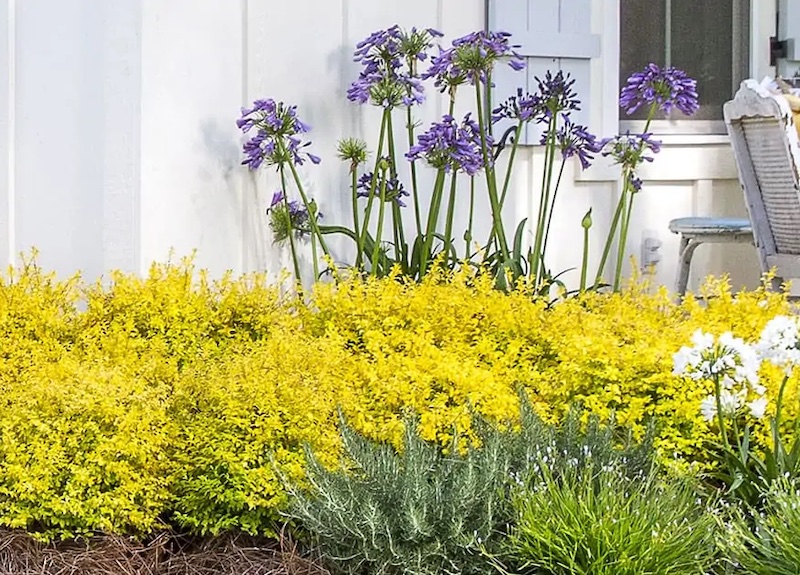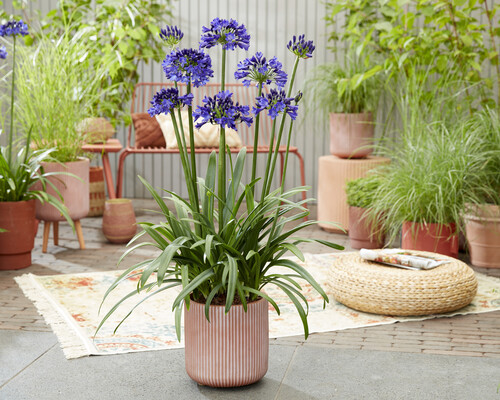Seasonal Agapanthus Care: Planning For Wintertime and Summertime
Seasonal Agapanthus Care: Planning For Wintertime and Summertime
Blog Article
Unleashing the Secret to Effective Agapanthus Growing: Tips and Tricks for a Flourishing Yard
In the world of gardening, cultivating agapanthus successfully calls for a tactical strategy that encompasses different elements of plant care. By understanding the nuances of agapanthus cultivation, one can produce a setting where these plants flourish and flower perfectly.
Growing Agapanthus: Best Practices
When planting Agapanthus, appropriate dirt prep work is important for making sure effective development and development of these gorgeous flowers. Agapanthus, frequently called Lily of the Nile or African lily, flourishes in well-draining soil with a slightly acidic to neutral pH degree - Agapanthus. Prior to growing, it is critical to modify hefty clay dirts with natural matter such as compost or peat moss to improve drain and supply crucial nutrients for the plants
To grow Agapanthus, pick an area that obtains complete sunshine to partial shade, as this will promote healthy growth and plentiful flowering. Dig a hole twice the diameter of the plant's root ball and place the Agapanthus at the same deepness it was formerly expanding. Carefully backfill the opening with soil, pushing down firmly to remove any air pockets around the origins.
Water the freshly grown Agapanthus completely and remain to keep the soil evenly wet, specifically throughout the plant's energetic growing period. Agapanthus. Using a well balanced fertilizer once a month can further sustain the plant's development and flowering. By following these best techniques for growing Agapanthus, you can produce a spectacular display of these captivating blossoms in your garden
Ideal Dirt Issues for Agapanthus
For optimal growth and growing success of Agapanthus plants, making sure the soil problems are optimal is essential. Agapanthus favors soil that is abundant in nutrients, so integrating a well balanced fertilizer throughout the growing period can advertise healthy development and dynamic blossoms.

Watering and Fertilizing Tips
To make sure healthy and balanced growth and dynamic flowers, proper watering and fertilizing techniques are essential for successful Agapanthus farming. Agapanthus plants benefit from regular watering, specifically throughout the expanding season.
When it concerns fertilizing Agapanthus, a well balanced plant food with equivalent parts nitrogen, phosphorus, and potassium can be applied in the spring to promote healthy growth and flowering. Slow-release plant foods are excellent for giving nutrients progressively over a prolonged period. Prevent over-fertilizing, as this can cause excessive vegetation growth at the expense of blossoms.
In addition, integrating organic issue like garden compost into the dirt can improve nutrient levels and boost soil framework, assisting in the general health of the Agapanthus plants. By following these watering and feeding suggestions, gardeners can ensure their Agapanthus plants grow and create spectacular display screens of flowers.
Pruning and Deadheading Strategies
Appropriate pruning and deadheading methods play an important role in keeping the health and wellness and visual visit the site appeals of Agapanthus plants, enhancing the vital practices of watering and feeding for successful farming. Pruning Agapanthus entails removing spent blossom heads, yellowing or dead fallen leaves, and overall shaping of the plant to promote much better growth. Deadheading, the procedure of eliminating discolored flowers, not just boosts the plant's appearance however additionally encourages further flowering.
When deadheading Agapanthus, it is suggested to clip off the blossom stem at the base using sharp, clean shears. This procedure redirects the plant's energy from seed manufacturing back into root and vegetation growth, promoting a much healthier and more robust plant. Normal deadheading can extend the flowering duration of Agapanthus and prevent self-seeding, which can cause congestion.
In terms of pruning, Agapanthus usually take advantage of a light trim after blossoming to clean up the plant and encourage fresh growth. find out Reducing back the invested blossom stems and getting rid of any kind of dead or broken foliage assists keep the plant's vigor and overall appearance. Nevertheless, it is vital to avoid cutting right into the crown of the plant, as this can damage its health.

Protecting Agapanthus From Pests and Diseases
Carrying out reliable parasite and condition monitoring approaches is crucial to guarding the wellness and vitality of Agapanthus plants in cultivation. Agapanthus are usually durable plants, however they can still come down with different bugs and illness if not correctly taken care of. One typical insect that affects Agapanthus is the Agapanthus borer, a caterpillar that tunnels into the plant, creating damages to the flowers and leaves. To prevent infestations, regular examination of the plants is necessary. If borers are spotted, they can be by hand eliminated, or insecticidal soap can be used as a control procedure.
In enhancement to insects, Agapanthus are susceptible to conditions such as origin rot and fungal leaf places. These problems can typically be prevented by making certain appropriate drainage and staying clear of overwatering. If indications of disease show up, impacted components of the plant ought to be promptly gotten rid of to avoid more spread. Fungicides may likewise be made use of as a therapy measure, following the supplier's click for more instructions meticulously. By staying alert and attending to parasite and disease concerns promptly, garden enthusiasts can aid their Agapanthus flourish and prosper.

Verdict
In conclusion, successful farming of agapanthus needs proper growing techniques, perfect dirt problems, adequate watering and fertilizing, regular pruning and deadheading, and security from conditions and pests. By following these techniques and ideas, garden enthusiasts can make sure a prospering yard loaded with beautiful agapanthus blooms. Agapanthus. Remember to maintain consistent care and attention to information to promote the wellness and durability of these stunning plants
When growing Agapanthus, proper soil prep work is important for guaranteeing successful growth and growth of these beautiful blossoms.Water the freshly grown Agapanthus completely and continue to keep the dirt equally wet, particularly during the plant's active expanding period.For ideal growth and blooming success of Agapanthus plants, ensuring the dirt conditions are excellent is essential. When planting or transplanting Agapanthus, make sure the soil is well-prepared to provide the essential structure for the plants to establish themselves successfully. One usual bug that impacts Agapanthus is the Agapanthus borer, a caterpillar that tunnels right into the plant, causing damages to the fallen leaves and blossoms.
Report this page